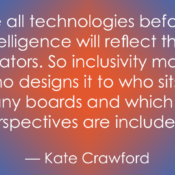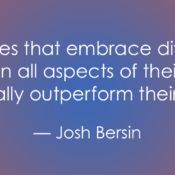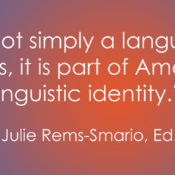
Is the Term ‘Speaking’ Inclusive and Equitable?
A couple of months ago, I had lunch with a DeafBlind gentleman, one who is a nationally renowned DeafBlind advocate. At one point during lunch, I signed the word “recognize,” to which my fellow diner pointed out something that I had not consciously realized: the sign I had been using for years for “recognize” (click here for a visual demonstration) dictates one needs to see something to recognize it.
In this moment, I realized I unintentionally disrespected this DeafBlind gentleman.
Was I superior to him because I am able-sighted? Most definitely not!
Were there other inclusive and equitable signs I could use to convey I “recognized” something? Of course! Click here for a perfect example.
Yet, my sign choice selection was a result of my behavioral bias in which my respective background, personal experiences, societal stereotypes and cultural contexts impacted my perspective of the world.
I did not realize it at the time, but there is a parallel between the DeafBlind gentleman and me.
I’m a hard of hearing individual that identifies as culturally Deaf. Unlike many of my counterparts in the Diversity and Inclusion (D&I) space, I don’t speak to my audiences; instead, I sign to them in American Sign Language (with the presence of sign language interpreters for those who do not sign).
Yet, while I also utilize the word “present” instead of “speak” on my website, I am contacted often to “speak” to audiences. While unintentional, these type of word choices impact me, much like my sign for “recognize” impacted the DeafBlind advocate.
To this end, I encourage others, especially those in D&I spaces, to reconsider using “speaking” and other terms that elicit a specific behavior bias and use inclusive and equitable term(s).
(Originally posted on LinkedIn).



